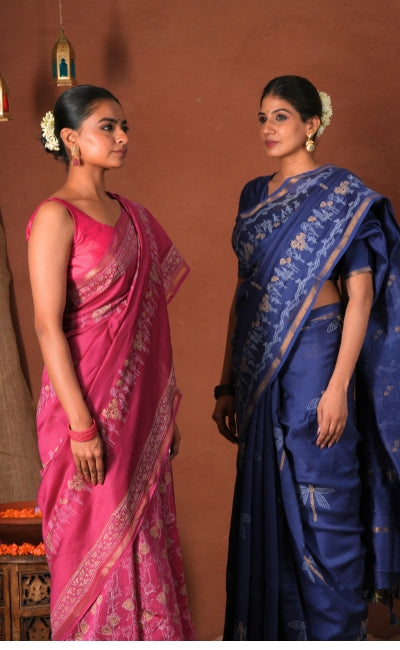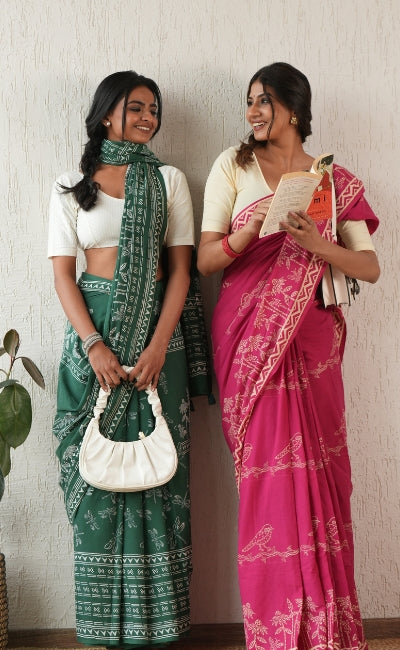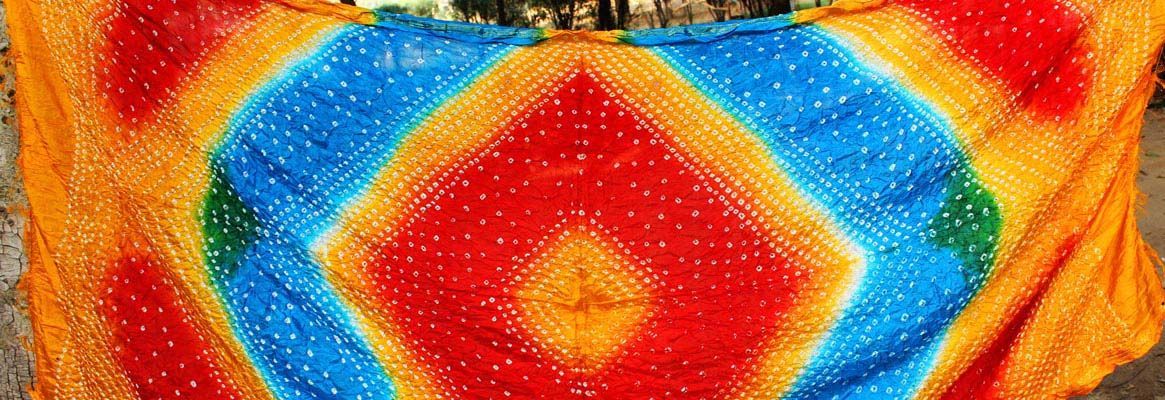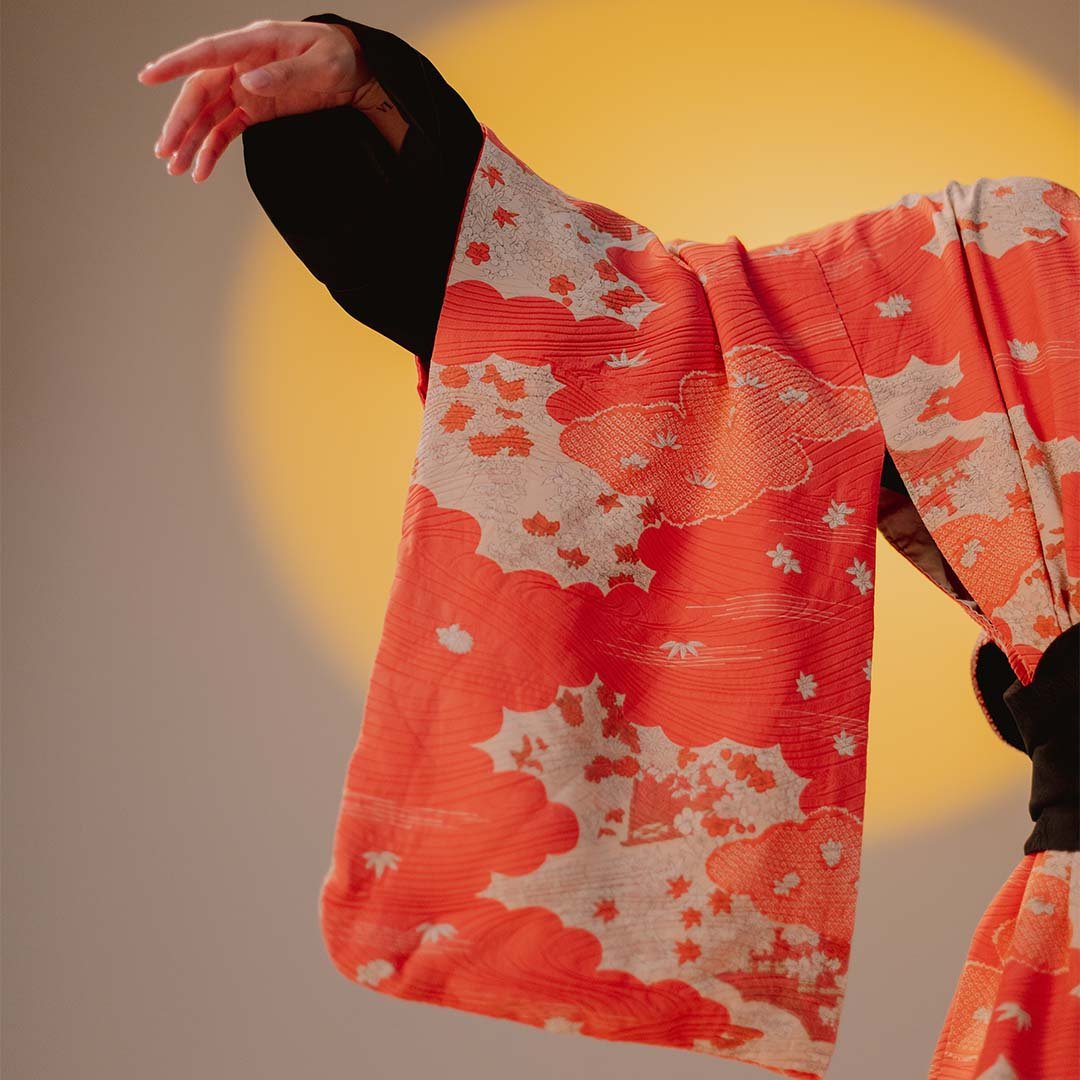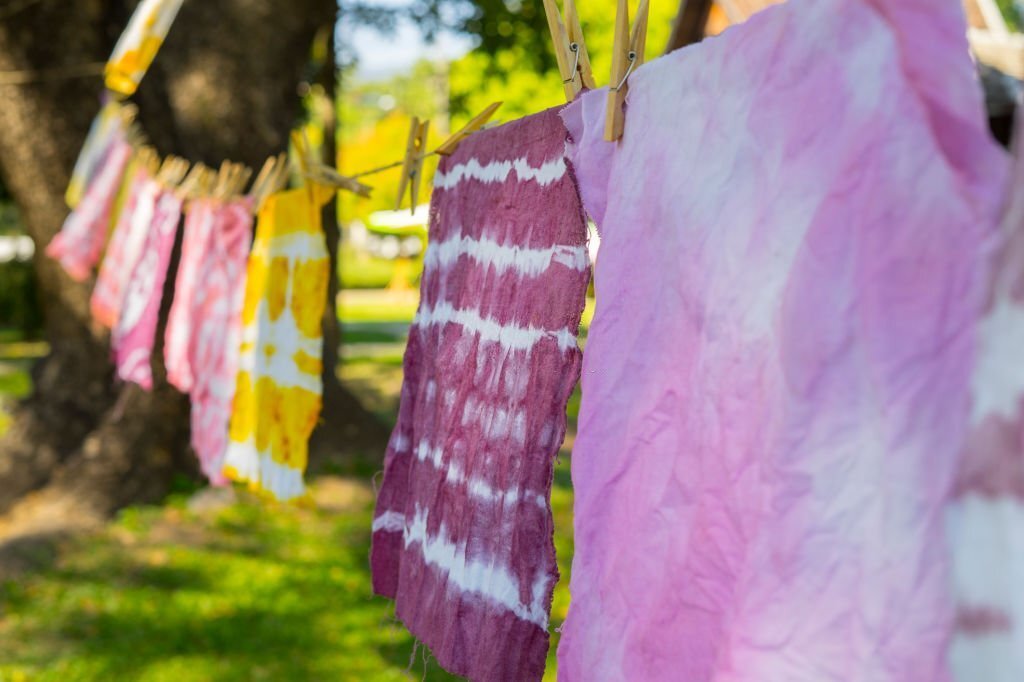
A TRADITIONAL PRINTING TECHNIQUE WITH NATURAL COLOR - BAGRU PRINT
The Chhipa community, who have been masters of this bagru print technique for hundreds of years, uses the traditional art of hand block printing in the Jamini' Bagru Print' collection of home décor pieces. These interior décor elements and handcrafted accessories were created using natural colors.
SootiSyahi is working hard to explore, expand, and make people aware of these handcraft home décor items and clothing with bagru print art design. We have even added many such items in our eCommerce store under the category "SootiSyahi Homes."
We Indians were the first to experiment with natural dyeing and printing centuries ago. A tiny village called Bagru is located in the desert state of Rajasthan, roughly 30 kilometers from Jaipur. This community, which has about 22,000 people, is known for preserving the three-century-old tradition of block printing.
The ancient form of printing with woodblocks, using natural colors and a mud resist process called "Dabu," is carried out by master artisans in Bagru. SootiSyahi works with such bagru print masters to provide the best traditional and authentic print with natural dye to its customers across India.
Bagru print is an eco-friendly collection with pieces for clothing, and other items. Fuller's earth (multani mitti) is used to treat the basic cloth, which is then soaked in turmeric (haldi) and hand-stamped with finely shaped wooden blocks using natural dyes in earth tones.
We play with natural items (natural products to get the dye color) to provide clients with the best fabric or material. These natural colors are safe for the body and can be used by anyone.
In the Indian subcontinent, color dyeing is a vital textile manufacturing process, and SootiSyahi has mastered the technique elegantly.
So, What are these Natural Dyes?
Well, these natural dyes have long been derived from the mineral and organic sources, including plant matter and the ground, and applied to the fabric, or cloth. The processes of dyeing differ from one region to the next.
Natural dyes produce a wide range of rich, complex colors, often with unexpectedly beautiful outcomes in the form of dresses, kurtis, sarees, and many other home décor items. What's fascinating is that most natural dyes come from plants and foods, such as pomegranate rinds, and come in a wide range of colors.
Indigo is a dye that has been grown along the banks of the "Indus River" for thousands of years.
But do you know what Indigo means and where this word originated from?
Indigo is derived from the Greek word "Indikon," which refers to a blue dye from India mentioned by Pliny, the Elder, a Roman naturalist, and philosopher.
The Kutch region and the Khatri group of textile workers have been linked to the manufacture and use of indigo dye. Indigo has always been a source of pride for the people of Kutch. Under the scorching sun of the Rann of Kutch desert, the deep blue's cooling properties are irresistible, and the Khatris believe that Indigo is a natural antibacterial.
This is why SootiSyahi works and manufactures bagru print sarees and dupattas made from Bagru/Indigo dye. So, do you want to learn more about the natural dye?
Here we will present you the Traditional Indigo Dyeing Method:
- Crushed leaves, lime, and salt are placed in large mats (terracotta urns placed in the ground) and ferment for a month.
- At the bottom of these mats, there are deposits of indigo dust.
- Now prepare a mixture.
- The sediments are filtered and pulverized because Indigo’s ideal pH level is 11-12, so to maintain it, lime or jaggery is added.
- This dense concoction is knotted in cotton bags and buried for two months when the hot sand absorbs excess water, leaving an Indigo cake behind.
- The Indigo cake is crushed with water on a stone slab, then Acacia torta seeds, henna leaves, jaggery, and date palm are added until the slurry is even and yellowish-green.
- This is kept at the proper temperature in the underground mat.
Warm red colors are also achieved with natural dyes. Red dyes, like Indigo, are characteristically Indian. We Indians often categorize red as a part of marriage and fertility.
The fast, bright blues and reds produced by Indigo and chay-root are native to coastal South-East India (and the northern tip of Sri Lanka). It produces a range of beautiful reds and pinks on cotton combined with an alum mordant, giving the world-renowned chintzes their desirability from the 17th century onwards.
Let's Dig Deep into Ancient Times
At the Mohenjo-Daro excavation site, traces of madder-colored textiles were discovered, indicating that madder was used as a dye as early as 1100 BC. According to trade documents, Kutch began exporting colored fabric to other world regions in the 1600s.
The roots of Manjistha (Rubia cordifolia or Indian Madder), the root bark of the Aal tree (Morinda citrifolia L. or Indian Mulberry), and Rubia tinctorum L. are all sources of reds.
Lac produces one of the most beautiful Indian reds. However, the extraction procedure is somewhat complicated: it is made from the crushed bodies, eggs, and larvae of female lac insects that cluster in great quantities on the branches of specific trees, mainly in eastern India and Assam. When applied alone on silk, it produces a pinkish-red, and when combined with a mordant, it makes a vivid, deeper red.
So, How are Colors Obtained?
SootiSyahi will explain you each in detail:
Black and red are commonly used in antique block prints. Compared to other natural hues, black is less prone to running and fading. The first black hue is created by repeatedly dipping fabric into Indigo.
The first black hue is created by repeatedly dipping fabric into Indigo. A variety of blacks, including jet black, reddish-black, and dark chocolate reddish black, can be prepared.
But what's the way?
The rusted iron is boiled. Then the water and jaggery is added in the sun to produce jet black. The reddish-black color comes from a reddish mitti (mud) with high iron content.
Natural sources and plants are also used to create a few more hues.
The green color is obtained by boiling the fabric with pomegranate peels for two hours. The fabric/cloth is then sprayed with Haldi solution. The cloth is then colored using a water-based alum solution. As a result, the hue changes from blue to green.
A mixture of black dye and tamarind seed powder is employed to obtain an ash grey.
Turmeric (also used in cooking) is India's most famous yellow dye, and it produces a magnificent rich yellow.
Our artisans heat and filter the pomegranate peels and keep them overnight. The next step is to spray the water onto the cloth. Turmeric water is sprayed on the fabric once the fabric dries. The next step is to immerse the fabric in alum water to assist the color adhering to the fabric before being rinsed many times in freshwater.
We at SootiSyahi believe that dyeing cloth presents a significant problem in terms of color correction. The use of mordants by Indian dyers was crucial to their competence, unrivaled until the 19th century, when chemical dyes were invented.
India's textile legacy is perhaps best defined by its riches and mastery of brilliant and long-lasting natural dyes. SootiSyahi is working hard to keep the legacy alive for the present and future generations.
Do you know "Alum" is a mineral found in the ground used as a mordant in the dyeing process? It is known as Phitkari in Hindi and Phatakdi in Gujarati. The color of the colored cloth is affected by the mineral's blackness or lightness.
Natural dyes, according to SootiSyahi, are a more sustainable and economically viable solution for textile design. On the other hand, these procedures must stay local and linked to the farmers or craftspeople. Because some natural dyes are obtained from sensitive areas, scaling up to large, industrial quantities of dye material would necessitate hazardous natural resource exploitation.


